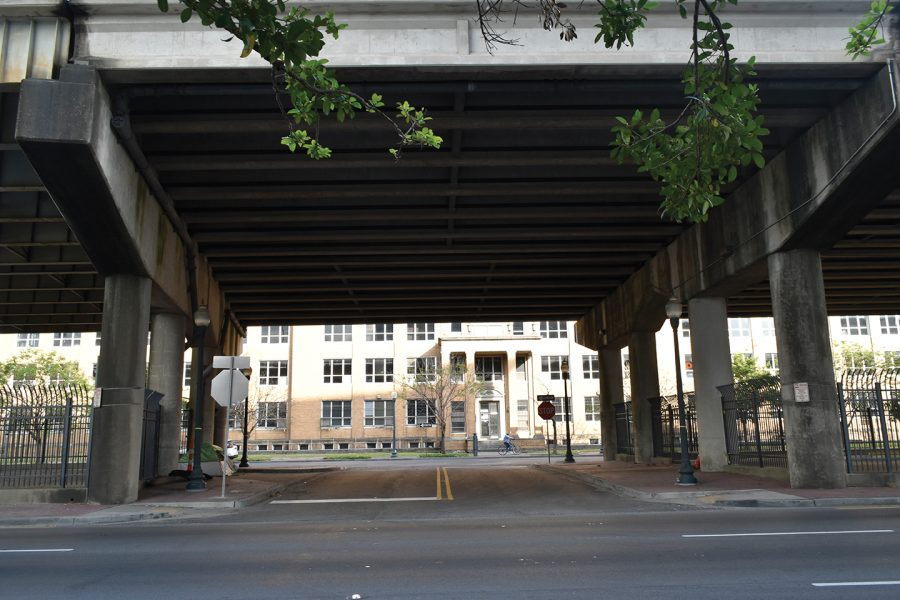New city office to address homelessness crisis
Underbridge where homeless people frequent for shelter. The new Office of Homeless Services and Strategy seeks to address the homelessness crisis.
May 4, 2023
Despite New Orleans’ homelessness rate having dropped 34% since 2020, the visibility of homeless encampments has led to the creation of a new Office of Homeless Services and Strategy to address the issue.
The office’s director, Nathan Fields, said he believes that rising housing and insurance costs are to blame for homelessness in New Orleans.
“If we can’t get persons who currently own homes to be able to be comfortable paying for their insurance and mortgage, how do we expect persons who are experiencing homelessness to get housing if they can’t afford to pay rent?” Fields said.
Flood insurance rates are projected to rise 134% on average across Louisiana, according to the Federal Emergency Management Agency. This could lead to increased rents as landlords face higher costs.
“In order to address homelessness, we have to address housing insecurity and income,” Fields said.
However, Fields said he believes that addressing homelessness will be a matter brought up to the state, and not just involve continuous work from city council.
In the meantime, Fields said he wants to address the shortage of manpower in homeless shelters. According to Fields, some of the shelters “don’t have the ability to get [homeless] people to and from locations or aren’t able to hold spots for them all year long.”
Increasing wages for shelter employees would help solve the manpower shortage so homeless people can access housing, employment assistance, and get government-issued IDs, according to Fields.
“The city is working on ways that we can increase the wages for persons working at shelters with the hopes that other [private] shelters will join us in collaboration,” Fields said.
Fields said he thinks that the influx of short-term rentals in New Orleans is sure to exacerbate already high housing costs. In March this year, the New Orleans city council adopted new limits to curb short-term rentals in residential neighborhoods. At the same time, the council provided a pathway for exceptions to the new caps on permits, according to the city council website.
“I do realize that 7,000 short-term rentals have helped drive up the housing costs. If we can reverse that and change what housing costs look like, we can also change the sustainability for individuals who are experiencing homelessness and persons who are currently housed,” Fields said.
Fields said he wants to let homeless people in New Orleans know that there is help for them.
“We’re not marketing where to go for homeless services. My goal is to do a campaign around what to do if you become in crisis,” Fields said.
This crisis support program will support housed people struggling with rent or unemployment as well.
Fields said that his office approximates there are “around 425 or more [homeless people]” in New Orleans. This is an increase from the previous count of 365 homeless people in January 2023, but it is impossible to know for certain how many there are.
The actual number of homeless people in New Orleans is likely much higher. This level of homelessness exists while 25,000 to 30,000 homes remain empty, according to code enforcement officials in 2019.
Jesuit Social Research Institute executive director, Annie Phoenix, has a different theory. She argued that “people with a criminal conviction often face discrimination in both housing and employment based on their conviction, which can lead to homelessness.”
Additionally, she highlighted the significance of the data.
According to the 2020 Survey of State Criminal History Information Systems, there are 1.9 million Louisiana residents – nearly half of the state’s population – with a criminal history. In Louisiana, 75% of formerly incarcerated people are jobless for up to a year upon release.
That is why Loyola’s JSRI has a prison education program to support currently and formerly incarcerated people on and off campus, according to Phoenix.








